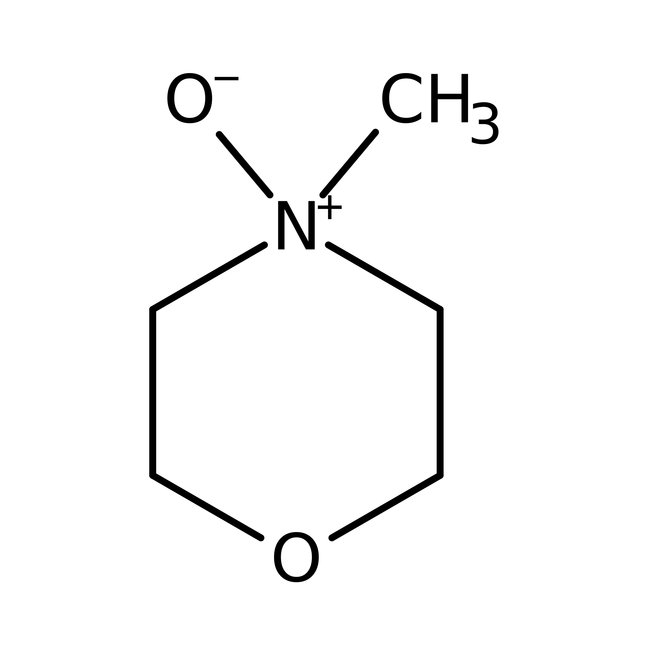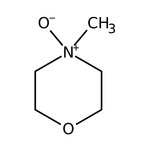Search Thermo Fisher Scientific
Thermo Scientific Chemicals
4-Methylmorpholine N-oxide, 50% w/w aq. soln.
CAS: 7529-22-8 | C5H11NO2 | 117.15 g/mol
Catalog number ALFA19802.22
View Price:Sign InSign in to see your account pricing. Need an account? Register with us today.
Quantity:
100 g
Specifications
Chemical Name or Material4-Methylmorpholine N-oxide
Name Notew/w aq. soln.
CAS7529-22-8
Health Hazard 1H315-H319-H335
Health Hazard 2GHS H Statement
H315-H319-H335
Causes skin irritation.
Causes serious eye irritation.
May cause respiratory irritation.
H315-H319-H335
Causes skin irritation.
Causes serious eye irritation.
May cause respiratory irritation.
View more
4-Methylmorpholine N-oxide acts as a non-metallic catalyst for the cyanosilylation of ketones. It is also employed as a co-oxidant for Sharpless asymmetric dihydroxylation in ionic liquids. It serves as a solvent in the Lyocell process to produce tencel fiber. Further, it is used in the preparation of aldehydes from primary alcohols in the presence of tetrapropylammonium perruthenate.
This Thermo Scientific Chemicals brand product was originally part of the Alfa Aesar product portfolio. Some documentation and label information may refer to the legacy brand. The original Alfa Aesar product / item code or SKU reference has not changed as a part of the brand transition to Thermo Scientific Chemicals.
Applications
4-Methylmorpholine N-oxide acts as a non-metallic catalyst for the cyanosilylation of ketones. It is also employed as a co-oxidant for Sharpless asymmetric dihydroxylation in ionic liquids. It serves as a solvent in the Lyocell process to produce tencel fiber. Further, it is used in the preparation of aldehydes from primary alcohols in the presence of tetrapropylammonium perruthenate.
Solubility
Soluble in water, methanol, ethanol, acetone, ethers and dimethylsulfoxide.
Notes
Hygroscopic. Store in a cool place. Incompatible with strong oxidizing agents, acid chlorides, acid anhydrides and chloroformates.
4-Methylmorpholine N-oxide acts as a non-metallic catalyst for the cyanosilylation of ketones. It is also employed as a co-oxidant for Sharpless asymmetric dihydroxylation in ionic liquids. It serves as a solvent in the Lyocell process to produce tencel fiber. Further, it is used in the preparation of aldehydes from primary alcohols in the presence of tetrapropylammonium perruthenate.
Solubility
Soluble in water, methanol, ethanol, acetone, ethers and dimethylsulfoxide.
Notes
Hygroscopic. Store in a cool place. Incompatible with strong oxidizing agents, acid chlorides, acid anhydrides and chloroformates.
RUO – Research Use Only
General References:
- Li, J.; Liu, Y.; Xu, X. S.; Li, Y. L.; Zhang, S. G.; Yoon, I.; Shim, Y. K.; Wang, J. J.; Yin, J. G. Highly efficient synthesis of novel methyl 132-methylene mesopyropheophorbide a and its stereoselective Michael addition reaction. Org. Biomol. Chem. 2015, 13 (7), 1992-1995.
- Huang, J.; Cui, J.; Li, X.; Jia, W.; Gu, C.; Shim, J. J. Selective Detection of TNT in Water Based on Functionalized Reduced Graphene Oxide Sensor Device. Sensor Lett. 2015, 13 (5), 357-364.



